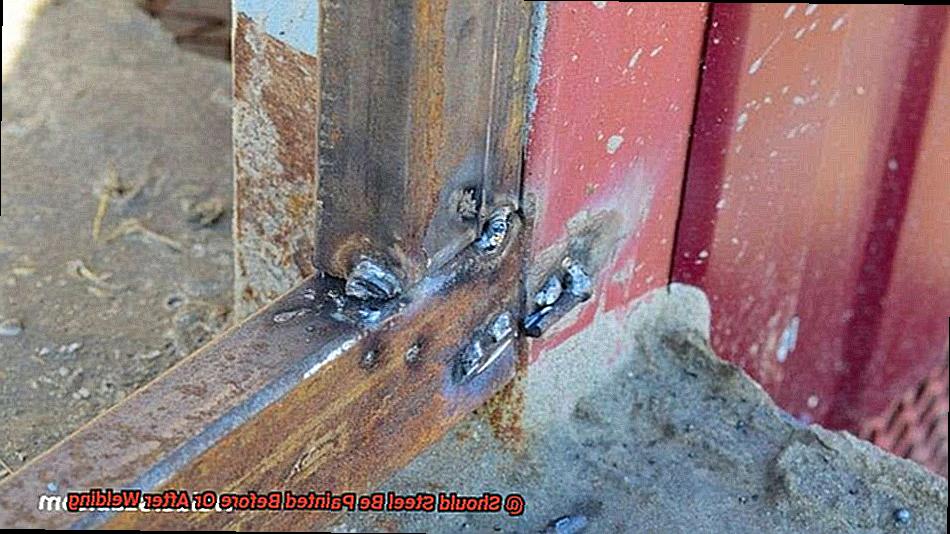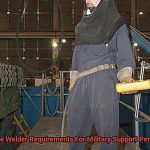Steel is a powerhouse material that’s relied on by industries worldwide for its unmatched strength and durability.
It’s used to construct everything from towering skyscrapers to robust automobiles, making it a vital component in modern-day engineering. However, before Steel can be put to use, it often requires welding – and this raises the question of whether Steel should be painted before or after welding.
The answer isn’t as simple as yes or no; it depends on several factors that require careful consideration. Painting Steel before welding has its benefits, such as protecting the surface from rust and ensuring a clean surface for welding.
On the other hand, painting Steel after welding can make the process easier by reducing the risk of damaging the paint during welding. In this informative blog post, we’ll delve into both options to provide you with comprehensive insight into their advantages and disadvantages.
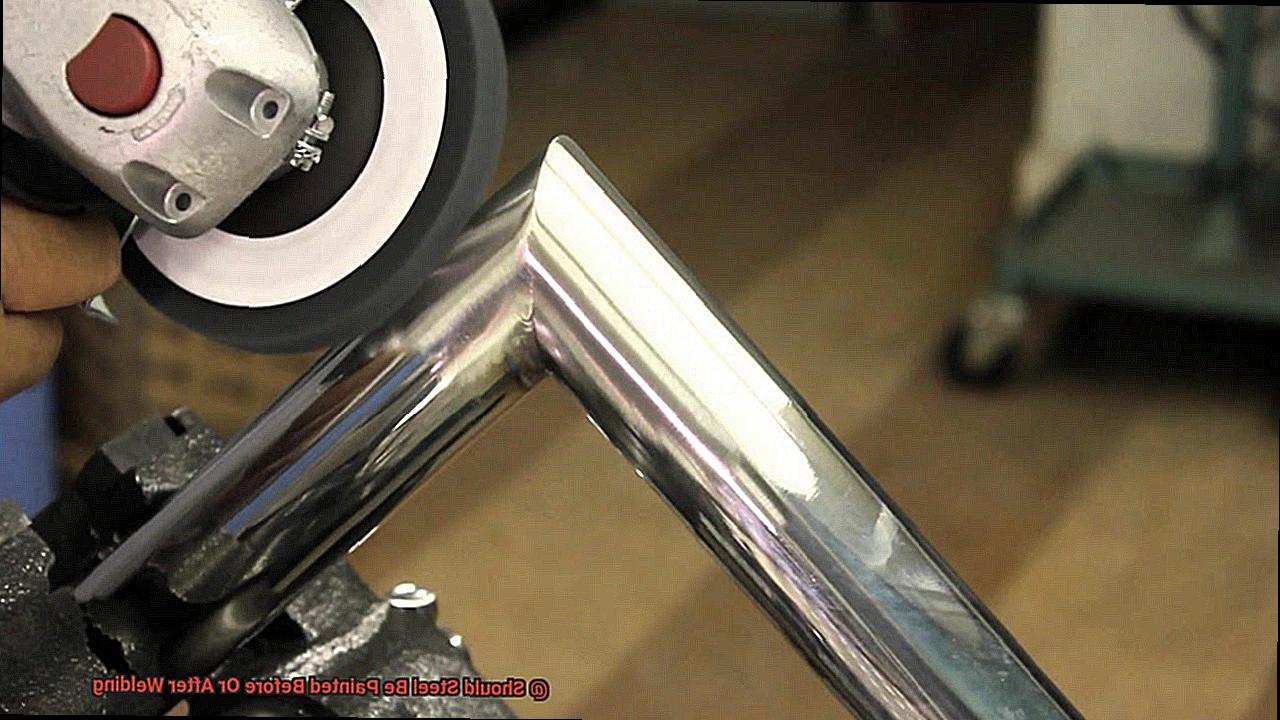
We’ll discuss why painting Steel before welding is essential, explore the effects of painting Steel after welding, and highlight the best scenarios where each option is suitable. So if you’re looking to gain a deeper understanding of the dynamics involved in painting Steel before or after welding, then read on.
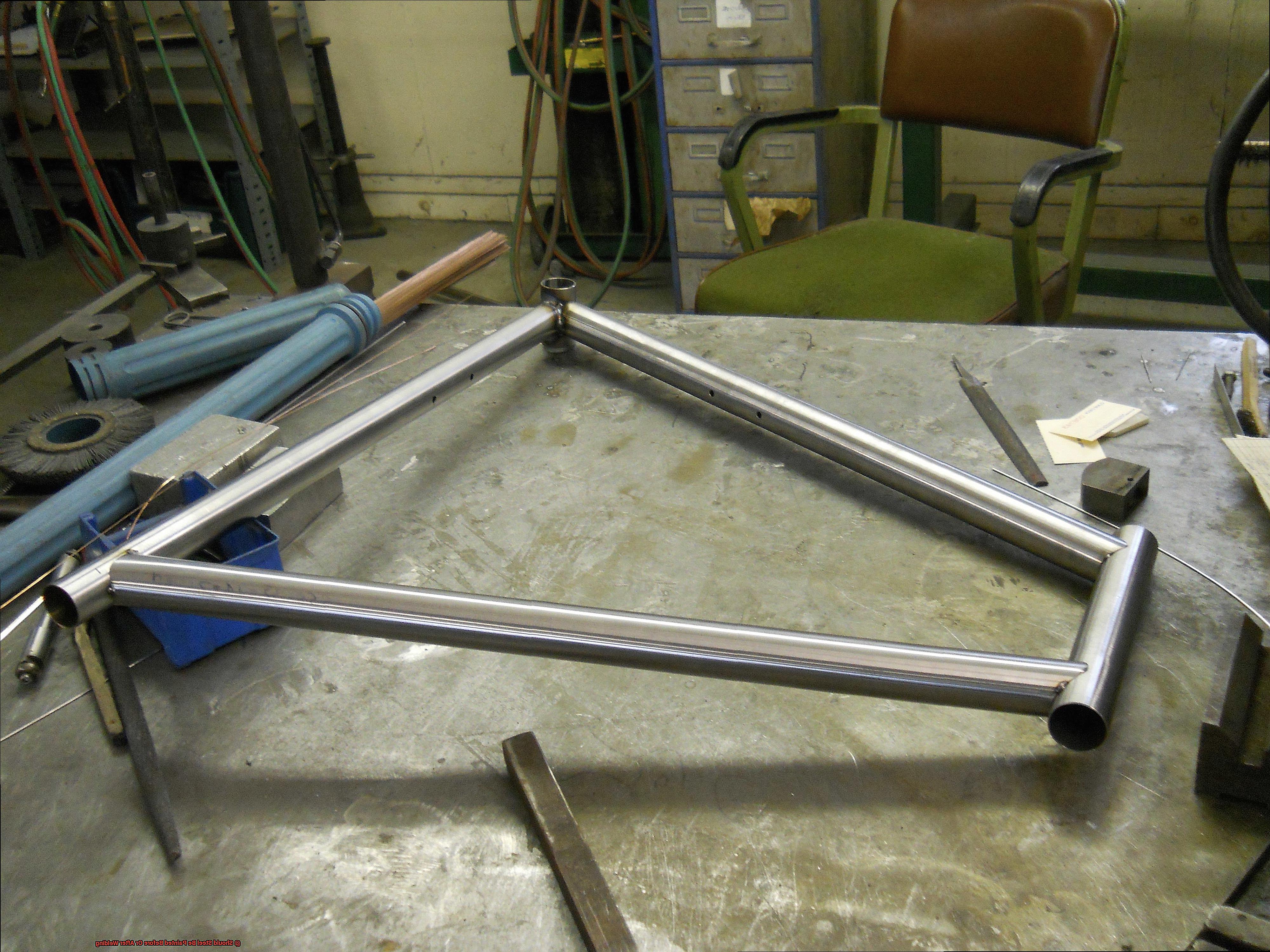
In this post, you’ll have all the information you need to make an informed decision for all your future welding projects.
Benefits of Painting Steel
Contents
The answer is a resounding yes.
Painting steel has numerous benefits that go beyond just enhancing its appearance. In this article, we’ll explore some of the most significant advantages of painting steel and when it’s best to apply the paint.
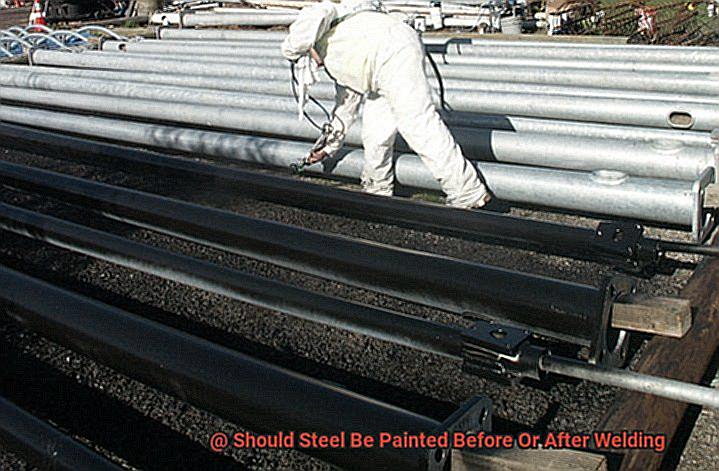
The first and most significant benefit of painting steel is its ability to protect against rust and corrosion. Steel exposed to harsh weather conditions or chemicals can be prone to rust and corrosion, which can weaken the metal and compromise its structural integrity.
However, by applying a coat of paint, you create a barrier that prevents moisture and other elements from coming into contact with the steel surface. This helps to protect the metal from rust and corrosion, making it last longer without needing additional repairs or replacement.
Painting steel can also improve its durability and longevity. The paint coating acts as a shield against abrasion, scratches, and other forms of wear and tear.
This means that the steel can withstand harsh environments and heavy use for extended periods without showing signs of wear and tear. In addition to these benefits, painting steel can also make it more resistant to fire.
Some specialized paints contain fire-retardant properties that can slow down or prevent the spread of flames in case of a fire outbreak. This is especially important in industrial settings where fire hazards are present.
Another benefit of painting steel is that it can make it more visible or easier to identify. By painting each metal with a distinct color or marking, workers can quickly identify which metal they need to use for a particular task.
This is particularly useful in industrial settings where different types of metals may be used for various purposes. When it comes to welding steel, it’s generally recommended to paint it after welding has been completed.
This is because high heat is applied during the welding process, which can cause the paint to burn or catch fire. However, if certain sections of the steel will be difficult to reach after welding, painting these areas beforehand may be necessary using a heat-resistant paint designed specifically for use on metal surfaces.
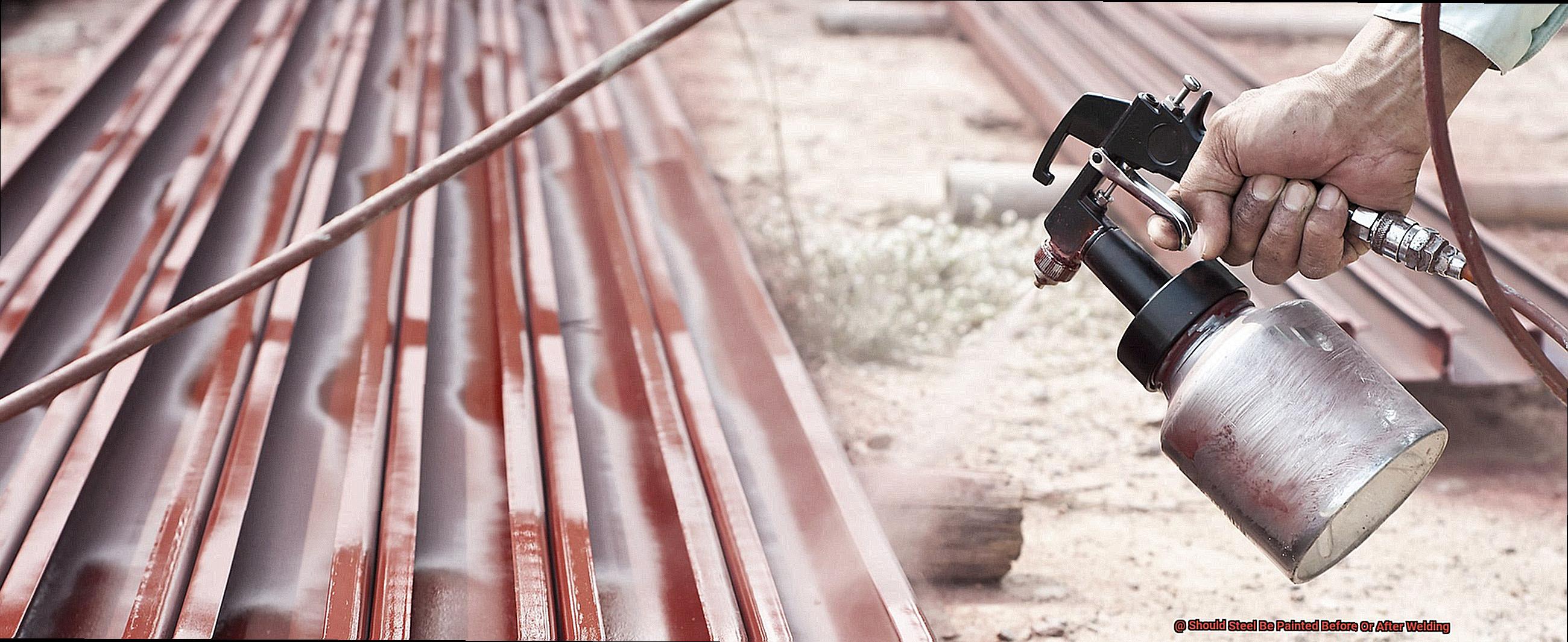
Factors to Consider When Painting Steel
Painting steel is not just about enhancing its appearance, but also about protecting it from rust and corrosion, as well as increasing its durability and longevity.
To achieve the best results, it is important to consider several factors before deciding whether to paint steel before or after welding.
Firstly, the type of paint to be used is a crucial factor.
Some paints are specifically designed for application before welding, while others are better suited for application after welding. The right type of paint can ensure maximum adhesion and protection, so choose wisely.
Another critical factor to consider is the type of welding process that will be used. The heat and sparks produced during stick welding can damage or burn off any paint that has already been applied.
In contrast, MIG and TIG welding produce less heat and fewer sparks, making them more suitable for application after painting. The condition of the steel also plays a significant role in determining when to paint.
If the steel is clean, dry, and free from rust and other contaminants, it can be painted before or after welding. However, if the steel is rusty or dirty, it must be cleaned and prepped before any paint can be applied.
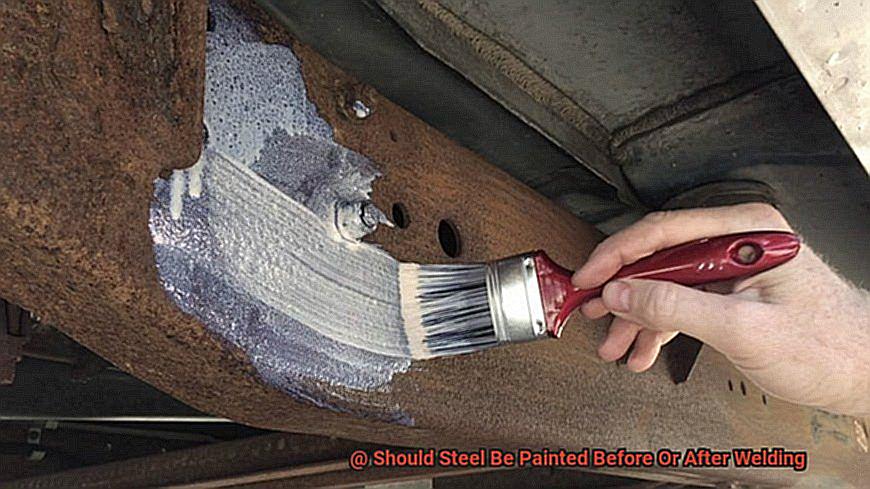
Lastly, the intended use and environment of the steel should also be taken into account. If the steel will be exposed to harsh weather conditions or corrosive elements, a high-quality paint designed for outdoor use should be applied after welding to ensure maximum protection.
On the other hand, if the steel will be used indoors and not subjected to harsh conditions, painting before welding may be a suitable option.
So, painting steel requires careful consideration of various factors such as the type of paint, welding process, condition of the steel, and intended use and environment. It is always recommended to consult with a professional to determine the best course of action for your specific project.
Preparing the Surface Before Welding
When it comes to welding, painting, and steel, surface preparation is not something to be taken lightly.
The quality of the weld can be directly impacted by the condition of the surface, and deciding whether to paint before or after welding depends on several factors that need to be carefully considered. To begin with, removing any contaminants from the steel surface is essential before welding.
Rust, oil, grease, and debris can all affect the weld quality and compromise the integrity of the final product. Grounding, sandblasting, or chemical cleaning are all effective methods for creating a clean and smooth surface that will allow for proper adhesion and penetration of the weld.
If you plan to paint after welding, it’s important to leave a small gap between the steel plates. This gap will allow for the paint to penetrate and cover any areas that may have been missed during surface preparation.
Additionally, using a primer before painting will improve adhesion and provide better protection against corrosion. Painting before welding is another option, but it does require selecting a high-temperature paint that can withstand the welding process without deteriorating or creating fumes.
Proper surface preparation is just as crucial in this case to ensure a flawless finish. In conclusion, preparing the surface before welding is a crucial step in achieving quality results.
Whether you’re painting before or after welding, taking the time to clean and prepare the surface properly will allow for proper adhesion and penetration of the weld and ensure a flawless finish.
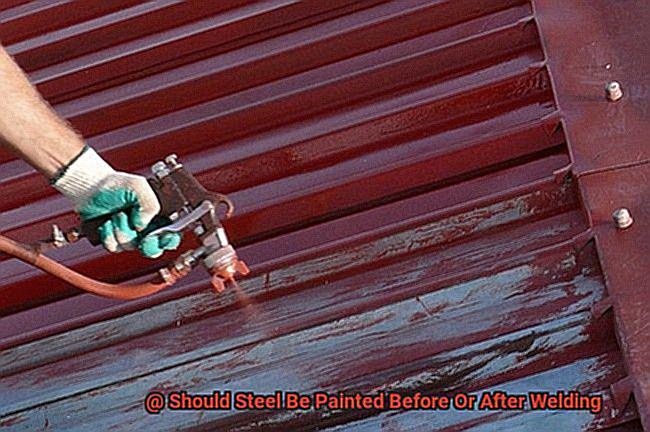
Painting Steel Before Welding
Although painting steel before welding can protect it from rust and corrosion, there are some crucial things to consider.
One of the main issues with painting steel before welding is the heat generated during the welding process. This heat can cause the paint to burn off, resulting in fumes and hazardous conditions for the welder.
Not only that, but if the paint is not completely removed from the area where the weld will be made, it can contaminate the weld, leading to weak or defective welds. Furthermore, choosing the right type of paint is important when painting steel before welding.
Some paints contain harmful chemicals that can be dangerous if inhaled while welding. It’s critical to use a paint specifically designed for metal surfaces and does not contain any toxic chemicals to avoid any health risks.
Despite these potential drawbacks, painting steel before welding can still be a viable option in certain situations. If the steel will be exposed to harsh weather conditions or corrosive environments, painting it beforehand can offer added protection.
However, it is essential to follow proper safety protocols and use protective equipment when working with paints and during welding. If you decide to paint steel before welding, remember to properly prepare the surface by removing any existing paint or coatings and thoroughly cleaning it before applying a new coat of paint.
uSCcH0Uo40k” >
Painting Steel After Welding
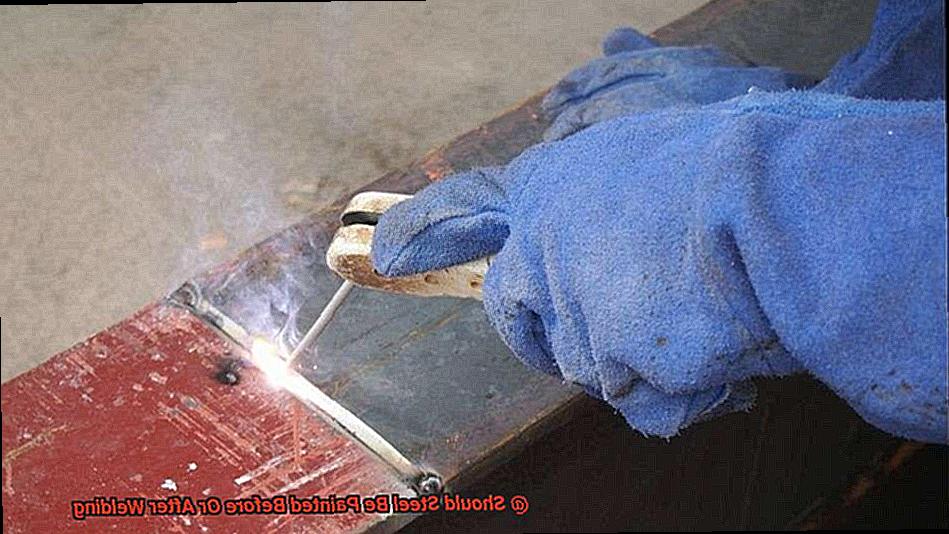
Painting steel after welding can be challenging, but with careful preparation and attention to detail, you can achieve a stunning and long-lasting finish.
The first step is crucial – ensure that the welds have cooled completely. The heat generated during welding can cause the metal to expand and contract, leading to cracking and peeling of the paint if applied too soon.
Once cooled, it’s time to thoroughly clean the surface of the steel. Use a wire brush or sandpaper to remove rust or debris and wipe down with a solvent like acetone or mineral spirits to eliminate any residual oils or contaminants.
Choosing the right paint for your welded steel is essential. Heat-resistant paints are ideal since they can withstand high temperatures generated during welding.
Some paints contain additives that help prevent peeling or cracking over time. Be sure to select a product that is specifically designed for painting steel after welding.
When applying paint, use a primer coat before applying the final color. Multiple thin coats of paint are better than one thick coat, allowing each layer to dry completely before applying more.
By using this technique, you’ll achieve a smoother and more even finish. Patience is key when painting steel after welding.
This will prevent bubbling or cracking that could occur if the paint isn’t given enough time to dry.
Also Read: How to Weld Corten Steel? – The Welding Guru
Conclusion
In summary, the decision to paint steel before or after welding is not a cut-and-dry one.
It requires careful consideration of several factors, such as the type of paint, welding method, condition of the steel, and intended use and environment. The benefits of painting steel go beyond aesthetics.
It can provide protection against rust and corrosion, increase durability and longevity, enhance fire resistance, and improve visibility. Surface preparation is key before welding or painting to ensure optimal results.
Properly cleaning any contaminants from the steel surface is vital before proceeding with either process. Opting to paint steel before welding necessitates selecting a paint that can withstand high temperatures generated during welding without posing risks to the welder.
On the other hand, if you choose to paint after welding, it’s essential to wait for the welds to cool completely before applying any paint. Using heat-resistant paints specially formulated for post-welding applications and thoroughly cleaning the steel surface are also critical steps.
